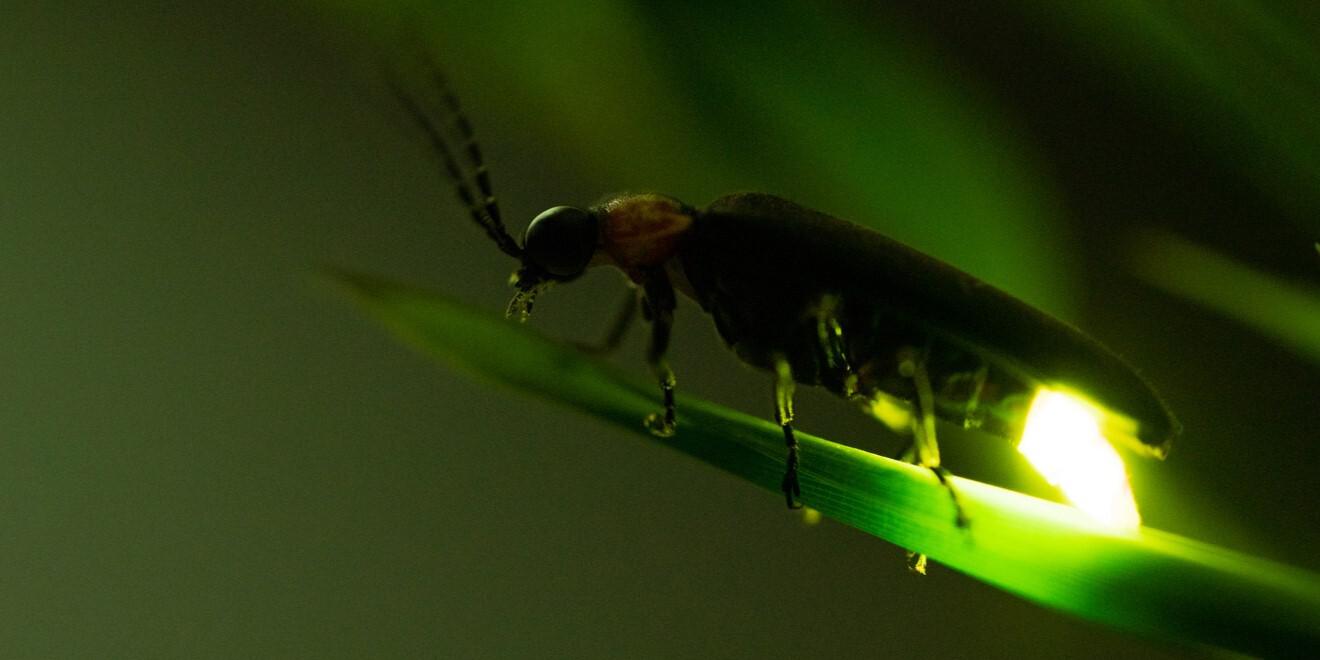How Fireflies Glow and the Reasons for Their Bright Light
Posted by Mosquito Squad
August 14, 2025

Just after sunset, the air is still and the porch light hasn’t clicked on yet. Suddenly, tiny blinking lanterns drift over the lawn. For generations, fireflies, or lightning bugs, have signaled the start of summer nights. Their quiet choreography has inspired children’s jar-collecting adventures, poetry, and research for decades. But how do fireflies glow, and how can you keep their twinkle alive while shooing away less charming pests like mosquitoes?
Let Mosquito Squad Plus® walk you through facts about fireflies and a few tips to attract them while keeping biting pests away.
Why Do Fireflies Glow?
Firefly light is produced inside each insect’s “lantern” (rear abdominal segments). They have specialized light organs in their abdomen that take in oxygen. Oxygen reacts with cells called luciferin along with luciferase enzymes and ATP energy. When oxygen enters the light organ, luciferase enzymes stimulate luciferin, the molecule that ultimately emits light. This creation of light is a chemical reaction called bioluminescence. Jellyfish are another type of animal that utilizes bioluminescence.
Each firefly species (there are over 2,000 kinds) has a unique flashing pattern that they use to communicate. Flashing patterns allow male fireflies to find females of the same species that they can then mate with to keep their species going strong! Their blinking lights also help to ward off predators. They have toxic blood, and their lights signal to potential predators that they shouldn’t be eaten.
When Do Lightning Bugs Come Out? Timing Your Watch Party
Ever wonder when to see lightning bugs at night? Most U.S. species emerge from mid-June through early August. You are most likely to see them on warm, humid evenings after rain. Step outside 30 minutes after sunset, and scan just above knee height – males cruise there first before spiraling higher. Cup your hands around your eyes like binoculars to block glare from nearby house lights.
What Does a Firefly Look Like in the Daytime?
Fireflies have an elongated oval shaped body, six short legs, black wings that fold flat against their back, a red-orange head, and two short antennae. If you look at the bottom of a firefly, you’ll see that the last three segments of the body are yellow – this is where they light up. Fireflies can be seen at any time of day, but most species only light up at night.
Fireflies in the Garden: How to Attract Fireflies
Unlike many flashy insects, adult fireflies seldom visit flowers and other plants for food. Most feed on nectar – or nothing at all because they are only focused on finding mates. Their larvae (glow-worm lookalikes) hunt slugs and snails underground. During all life stages, fireflies need foliage and organic matter for protection.
Here’s what attracts fireflies naturally:
- Moist soil and leaf litter – Larvae need damp cover. Leave a leaf layer beneath shrubs instead of mulching or clearing everything.
- Native grasses and low shrubs – Plants like goldenrod and cardinal flower protect fireflies and shield eggs from daytime heat.
- Firefly-friendly lighting – Swap harsh white or bluish LEDs for amber bulbs with low wattage. Add timers that shut lights off by 10 p.m., and position beams low and downward. The darker the skyline, the brighter lightning bugs will appear.
Are Fireflies Endangered?
Globally, habitat loss and bright, artificial lights dim the summer firefly show. Some species now appear on vulnerability lists, though many remain plentiful. That “endangered” headline doesn’t have to describe your local population – share tips with neighbors for attracting fireflies.
Beyond the Backyard: Join a Firefly Count
If you like fireflies, join a community firefly census. Citizen-science programs such as Firefly Watch or iNaturalist invite people to log flash patterns, dates, and weather notes. This crowdsourced data helps researchers map population shifts and apply conservation funds where they’ll matter most. It only requires ten minutes a week, a notebook, and your own eyes.
Quick-Fire Answers & Firefly Insect Facts
- What do fireflies eat? Larvae feast on slugs and other soft-bodied invertebrates. The adults of most species consume nectar and pollen, while some don't eat at all during their brief two- to four-week adult lifespans.
- Do fireflies bite? No. Their mandibles can’t pierce human skin. They lack biting mouthparts and pose no threat to people or pets.
- Where are fireflies found? They live on every continent except Antarctica, favoring temperate wood edges and wetlands. There are more than 2,400 species worldwide, with more than 170 species found in North America.
- Are there other bugs that look like fireflies? Firefly lookalikes, such as soldier beetles and click beetles, have similar elongated bodies but lack the lantern segments.
Enjoy the Glow While Deterring Mosquitoes
You might adore those golden blinks yet dread the buzz of mosquitoes. That’s where the Squad® comes in. Our technicians offer a barrier spray treatment that helps to control mosquitoes for up to 21 days without dimming the firefly parade. We strategically target areas where mosquitoes breed and thrive.
We also offer a natural mosquito treatment option, a blend of essential oils that effectively deters evening biting pests like mosquitoes and no-see-ums. Pair professional treatments with dark-sky lighting to attract the bugs you want while deterring the ones you don’t!
Ready to reclaim your evenings? Call us at (877) 332-2239 or request a free quote.
